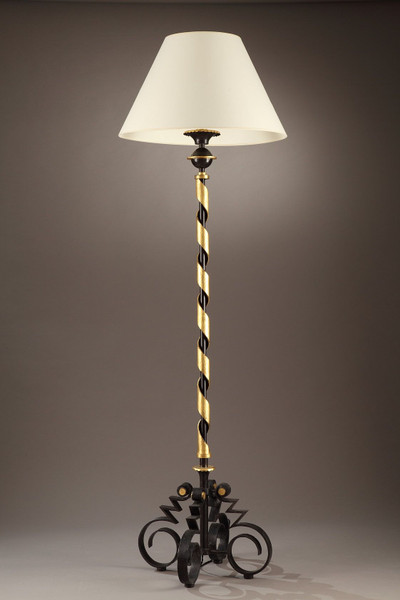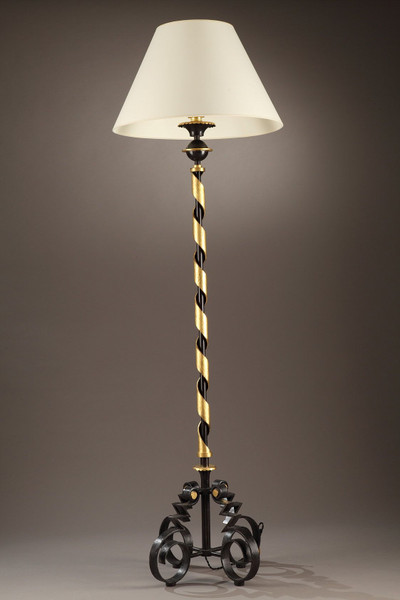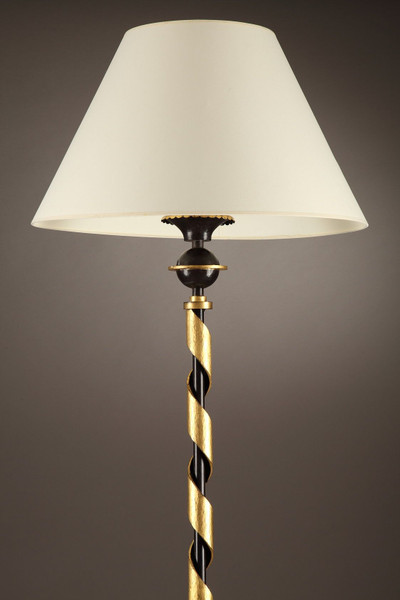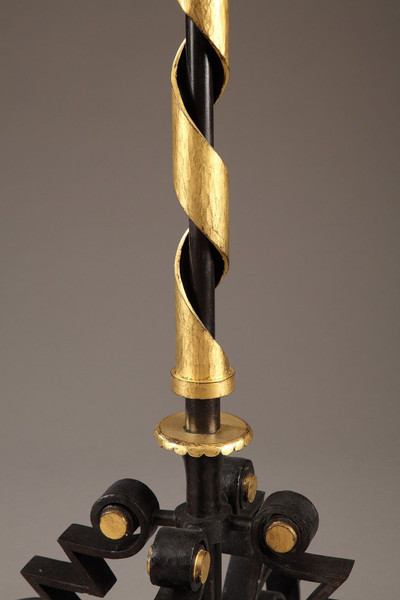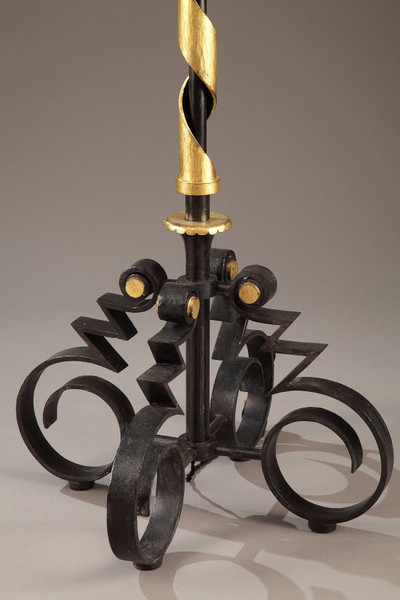Gilbert Poillerat floor lamp in patinated and gilded wrought iron, with a cylindrical shaft adorned with a scroll with a twisted cutout, topped by a sphere underlined by a disk. It stands on a quadripod base with scrolls linked to the shaft by four cylindrical elements. Slight wear scratches. Gilbert Poillerat (1902-1988) trained at the École Boulle, where he discovered metalworking. It was a revelation. After graduating in 1921, he joined the workshops of Edgar Brandt, a major French arms manufacturer and building ironworker, where he worked for six years. From 1928, while working for Baudet, Donon et Roussel, a major elevator and metal construction company, he presented his creations under his own name. Deeply classical by nature and respectful of the Old Masters, his taste tended towards the forms of the Grand Siècle. The era was characterized by the gradual abandonment of the cult of the right angle in favor of curves and convolutions, which suited him perfectly. From 1935 onwards, he received a number of prestigious commissions, including the doors to the Palais de Chaillot, the railings for the Bibliothèque Nationale and the lighting fixtures for the Eiffel Tower restaurant. But the young wrought-iron craftsman sometimes turned away from the monumental to apply his multiple talents to a few objects: andirons, lamp-posts, small interior railings, screens or figurines that refer to the productions of old-time wrought-iron craftsmen. By the end of the thirties, Gilbert Poillerat had already established himself as the leading wrought-iron craftsman of his generation. Bibliography: An identical model, dated circa 1938, is reproduced in François Baudot, "Gilbert Poillerat, maître ferronnier", Éditions Charles Moreau, Paris, 1999 (see photo above). Art Deco period, Circa: 1938 Dim: W:50cm, D:50cm, H:165cm.
- Reference :
- 1700
- Availability :
- Sold
- Width :
- 50 (cm)
- Height :
- 165 (cm)
- Depth :
- 50 (cm)
- Identifier Exists:
- False






